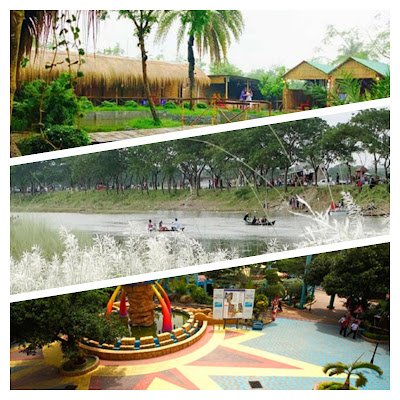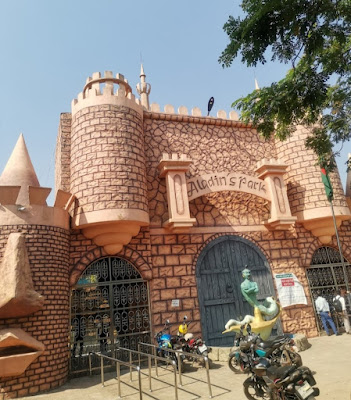The-Flower-Village-Of-Sabdi-Narayanganj-A-Comprehensive -Day-Trip - Itinerary-from-Dhaka.
The Flower Village of Sabdi: A Comprehensive Day Trip,Guide from Dhaka
1. Introduction: A Vibrant Escape to Nature's Canvas
Seeking a quick retreat from the relentless concrete and clamor of Dhaka? Look no further than Sabdi Village (popularly known as 'flower village' or the Flower Village) in the Bandar Upazila of Narayanganj District. This once-ordinary village, positioned gracefully on the eastern bank of the Shitalakshya River and nestled near the powerful Brahmaputra River, has been utterly transformed. Thanks to the remarkable efforts of its local cultivators, this rustic settlement has morphed into a breathtaking, colourful tapestry, making it a definitive destination for nature lovers, photographers, and anyone looking for a rich, fulfilling day trip from the capital.
2. A Floral Kaleidoscope: Sabdi’s Seasonal Splendour:
Sabdi's undeniable primary attraction is its extensive, commercial flower cultivation. The spectacle reaches its visual and aromatic peak during the winter and early spring months, particularly from January to February. Initially, the vast agricultural fields are blanketed in a bright yellow hue from the mustard bloom, stretching as far as the eye can see.
As February arrives, coinciding with special days like Valentine’s Day and International Mother Language Day (February 21st), the village explodes into a vibrant spectrum of colours. The dedicated farmers passionately cultivate approximately 24-25 varieties of flowers, including:
Roses, Marigolds, Gladiolus, Tube Roses, Gerbera, Dahlia, Chrysanthemum, Kathmalati (Ornamental Jasmine), Tagor, and Gypsophila.
The collective farming efforts ensure that the entire landscape is saturated in the beautiful hues of red, blue, pink, violet, yellow, and white, offering an unforgettable and extensive visual feast for every visitor.
 |
| Sabdi village |
3. Economic Transformation and Community Life:
Sabdi is more than just a tourist spot; it stands as a shining model of agricultural entrepreneurship. Flower cultivation has dramatically elevated the economic status of numerous local families. The flowers produced here supply the massive demand in Dhaka and across Bangladesh, especially during festive seasons.
Source of Livelihood: The flower business has become the primary income source for many local residents, involving men, women, and children.
The Role of Women: The women of Sabdi often gather the buds of Kathmalati (ornamental flowers) while exchanging household stories, weaving them into intricate Gajra (floral bracelets) and garlands, thereby contributing significantly to the family's income.
Peak Season Rush: Demand soars during special occasions like Valentine’s Day and International Mother Language Day, bringing peak profitability to the farmers. Although many fields are cleared of blooms after this period, local arrangements are often made to ensure visitors are not entirely disappointed upon arrival.
4. The Brahmaputra Riverside Vibe and Tourist Facilities:
Sabdi’s serene location on the bank of the Brahmaputra River enhances its natural charm. New tourist attractions have sprung up along the Brahmaputra's roads, thanks to local initiatives:
Scenic Dining: Large, colourful umbrellas have been placed to cover dining tables adorned with flower pots. This thoughtful arrangement allows visitors to enjoy local snacks and meals while soaking in the combined aesthetic beauty of the riverside and the flowers.
The Fuchka-Chatpati Hut: A popular two-story wooden structure houses a Fuchka and Chatpati shop. The unique design features a flower garden on the upper deck. This elevated viewpoint offers visitors a panoramic and comprehensive view of the Brahmaputra River, allowing them to enjoy their food while capturing wide-angle photographs and videos of the stunning landscape.
 |
| sabdi village Narayanganj |
5. Must-See Spots in and Around Sabdi:
To complete your day trip to Sabdi, make sure to visit these nearby historical and scenic locations:
Premlata: A peaceful and picturesque spot, ideal for quiet relaxation amid nature.
Kadam Rasul Darga and Siraj Shah’s Mazar Complex: Important religious and historical sites that reflect the rich heritage and culture of the local area.
Sonakanda Fort: A historic Mughal-era fortress in Narayanganj, offering a glimpse into ancient architecture.
Lakshmanbandh River Par: Perfect for enjoying the cool river breeze or taking a short boat ride to appreciate the surrounding natural beauty.
6. Suggested One-Day Tour Itinerary (8 Hours)
To maximize your experience, here is a suggested itinerary:
Time Activity
Before 10:00 AM Arrive in Narayanganj town (ideally near the river ghat).
10:00 AM - 1:30 PM Cross the river by boat/ferry to Lakhya Ghat. Take an auto-rickshaw/rickshaw to Sabdi Village. Explore the expansive flower fields, take photos, and visit nearby sights like Premlata.
1:30 PM - 3:00 PM Return towards the river bank. Enjoy a traditional lunch at the famed Maura Hotel (renowned for its Beef Bhuna and Kocu Shaak(taro greens) with rice), sample the Boiya Bhaat (available on Fridays) at Surabhi Hotel, or try the local favourite Bos Cabin's Cutlets!
3:00 PM - 5:30 PM Relax by the riverside, enjoy the cool air, and witness the captivating sunset over the Brahmaputra. Consider a short boat ride on the river.
7. How to Get to Sabdi Village:
Public Transport (Bus): From Dhaka (Gulishtan's Baitul Mukarram Mosque South Gate or Bangabandhu National Stadium), take an AC/Non-AC bus (Utsab, Shital, Bokun, etc.) towards Narayanganj. Alight at Chashara or near the Bandar 2 Nārghāt (jetty). Take an engine-powered boat across the river to Lakshya Ghat. From there, auto-rickshaws or easy-bikes will take you directly to Sabdi Village.
Private Vehicle: Cross the Kanchpur Bridge, proceed via Madanpur towards Bandar Sadar, and drive approximately 8 kilometers to reach Sabdi.
8. Important Travel Etiquette:
To preserve the beauty and livelihood of the village, please observe these guidelines:
Protect the Flowers: Refrain from picking or damaging the flowers, and do not step into the fields, as they are the farmers' source of income.
Keep it Clean: Use designated bins and avoid littering to help maintain the pristine environment of this beautiful natural escape.
Be Respectful: Treat the local community with courtesy and respect their culture and way of life.
Also visit:







Comments
Post a Comment